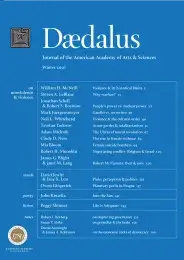Female suicide bombers: a global trend
Ever since Muriel Degauque, a Belgian convert to radical Islam, blew herself up in Iraq last November, questions have surfaced about the growing role of women in terrorism. Degauque’s attack occurred on the same day that Sajida Atrous al-Rishawi’s improvised explosive device (IED) failed to detonate at a wedding in Amman. This apparent growing trend of women bombers has the general public and counterterrorism specialists concerned because of its implication that women will be key players in future terrorist attacks.
Yet the recent focus on female suicide bombers neglects the long history of female involvement in political violence. In reality women have participated in insurgency, revolution, and war for a long time. Women have played prominent roles in the Russian Narodnaya Volya in the nineteenth century, the Irish Republican Army, the Baader-Meinhof organization in Germany, the Italian Red Brigades, and the Popular Front for the Liberation of Palestine. Historically, however, women have mostly played supporting roles. “Society, through its body of rules and its numerous institutions, has conventionally dictated [women’s] roles within the boundaries of militancy. Assisting in subordinate roles is welcomed and encouraged. Actually fighting in the war is not.”1 Most often, the primary contribution expected of women has been to sustain an insurgency by giving birth to many fighters and raising them in a revolutionary environment.
Women are now taking a leading role in conflicts by becoming suicide bombers–using their bodies as human detonators for the explosive material strapped around their waists. The first female suicide bomber, a seventeen-year-old Lebanese girl named Sana’a Mehaydali, was sent by the Syrian Socialist National Party (SSNP/PPS), a secular, pro-Syrian Lebanese organization, to blow herself up near an Israeli convoy in Lebanon in 1985, killing five Israeli soldiers. Of the twelve suicide attacks conducted by the SSNP, women took part in six of them. From Lebanon, the incidence of female bombers spread to other countries–Sri Lanka, Turkey, Chechnya, Israel, and now Iraq. Out of the approximately seventeen groups that have started using the tactical innovation of suicide bombing, women have been operatives in more than half of them.2 Between 1985 and 2006, there have been in excess of 220 women suicide bombers, representing about 15 percent of the total.3 Moreover, the upsurge in the number of female bombers has come from both secular and religious organizations, even though religious groups initially resisted using women.
Their participation in suicide bombings starkly contradicts the theory that women are more likely to choose peaceful mechanisms for conflict resolution than men are–that women are inherently more disposed toward moderation, compromise, and tolerance in their attitudes toward international conflict.4 (In fact, most existing notions of women in the midst of conflict portray them as victims of war rather than as perpetrators.) Complicating these notions of femininity further is the fact that the IED is often disguised under a woman’s clothing to make her appear pregnant, and so beyond suspicion or reproach. On April 25, 2006, Kanapathipillai Manjula Devi, used such a tactic to penetrate a military hospital in Colombo, Sri Lanka. Posing as the wife of a soldier on her way to the maternity clinic, she gained access to the high-security facility.5 She had even visited the maternity clinic for several weeks prior to her attack to maintain her cover.6 The advent of women suicide bombers has thus transformed the revolutionary womb into an exploding one. . . .
To read the full essay, access the PDF of the volume.
